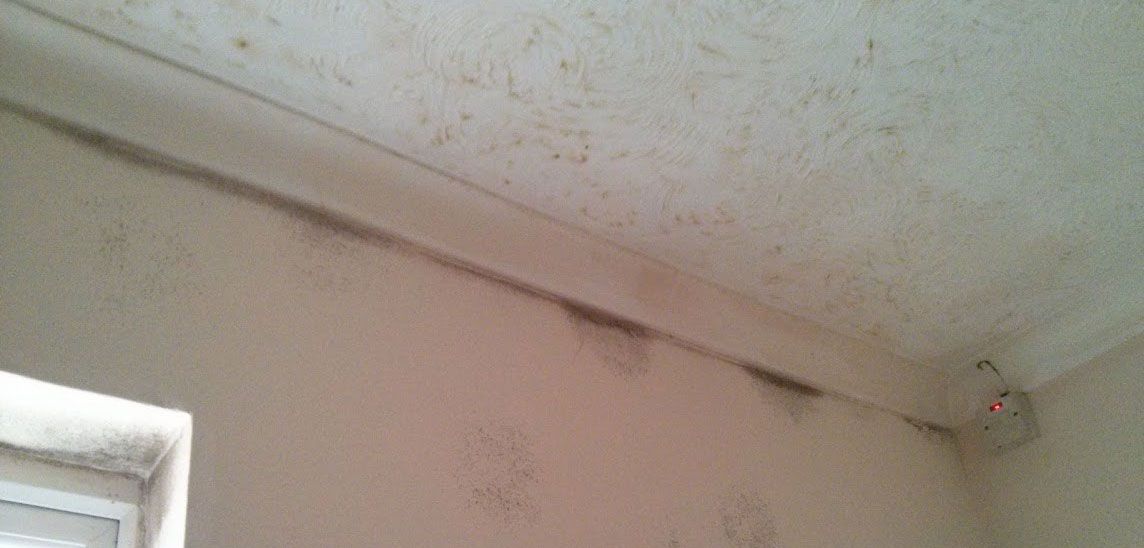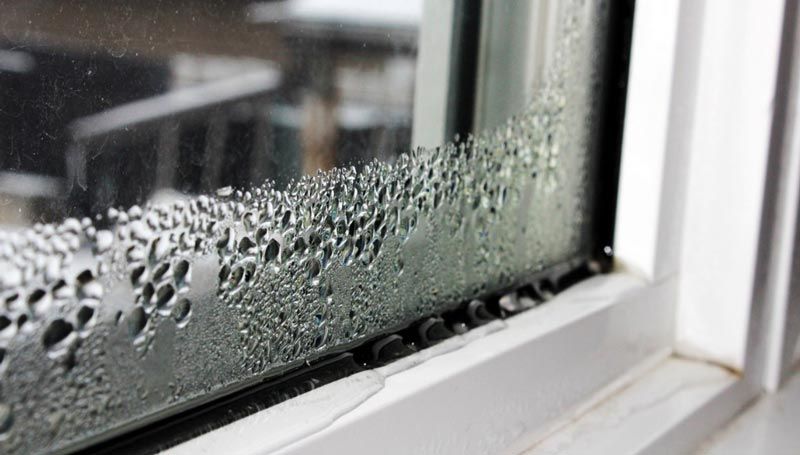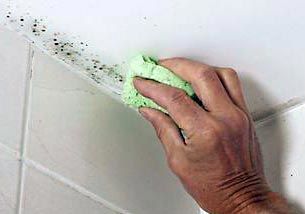Damp, condensation and mould

During colder months it's not uncommon to see patches of mould appearing in some rooms the house. It can occur in any home, from a studio flat to a sprawling mansion. Clothes and furniture can be damaged and it can also trigger health problems like asthma. Tenants often assume that it's due to the structure of the house, and sometimes that is the case if a gutter is blocked or damaged or roof tiles are missing. More commonly we've found it's related to lifestyle and lack of ventilation.

What is damp?
In is simplest form, damp is caused by condensation. Moisture turns to vapour in the air. When the temperature drops the air can't hold as much moisture. When the air meets a colder surface the moisture condenses (turns back into water droplets) and this usually happens on windows & cold (often external) walls. This will eventually cause mould and damp.
Damp doesn't discriminate. Often caused by lifestyle or failing to keep up with house maintenance, it can prove a real headache. That’s why, if you do see signs of damp, it's best to get to the bottom of the problem as soon as possible.
Causes of damp
Lifestyle
Lifestyle is by far the most common cause of internal damp which leads to mould and is often indicated by condensation on the inside of windows & walls. Cooking, showering, drying clothes indoors and breathing without adequate ventilation can all cause excess moisture. Droplets can form on indoor surfaces such as mirrors, windowsills and on walls, particularly when they're cold. An average family can easily make 20 pints of water vapour in just one day.
Condensation tends to get worse in cold weather because we have a natural tendency to close windows which reduces air flow & traps moisture inside the house. Damp patches caused by condensation often appear around windows and on external walls, behind large pieces of furniture and where there is little air movement, soft furnishings and leather goods can also have condensation form on them from absorbing moisture in the air.
Property structure
Missing roof tiles or damaged gutters that cause drips in the same place over time can easily build up to cause damp patches inside a home. Missing or deteriorated damp proof course (DPC) can also allow moisture from the ground to seep up through walls and floors. A blocked or leaking kitchen waste can cause puddles that will allow moisture into a property over a prolonged period.
Leaking pipes in walls or underneath floors can accumulate gallons of water over time. If your boiler often loses pressure and needs topping up this could be an indicator of a leaking pipe.
Sometimes ventilation under the ground floor is poor because builders have left rubble behind that hinders or prevents adequate air flow. In some cases extra ventilation for sub floors is needed and fitting an air brick might be the solution.
Please report any problems as soon as possible. Delays could cause additional and unnecessary damage.
Solutions & prevention

Mould can be easily removed. You can wipe it off with a disposable cloth, using some diluted household bleach (don't use neat bleach!) or household cleaner. There is no need to use strong chemicals, just wipe over again every few days to stop the mould growing back. You can use a fungicidal wash that carries a Health & Safety Executive approval number, but follow the manufacturer’s instructions precisely.
Dry clothes outdoors whenever possible. Always keep a window/s open when drying clothes indoors. Avoid drying clothes over radiators as it releases the moisture much faster than on an airer. Ask yourself "where will all the water vapour from the drying clothes go?" If using a tumble dryer make sure it is vented to the outside air.
Rather than turning your heating on or off when you're hot or cold try to maintain a constant temperature. By keeping your house warm the surfaces won't get cold enough to create condensation. This can also be more economical as your boiler will only run briefly for short periods instead of running at maximum power for a longer period.
Open windows to increase ventilation for at least an hour each day but more if possible, especially when cooking, showering, washing and drying clothes. Mop up any condensation every day, and wring cloths out rather than dry them on radiators as this will just put the moisture back in the air again. Close kitchen and bathroom doors during use as this will help to reduce the passage of moisture to other parts of the house.
Keep the bathroom door closed when bathing or having a shower, and keep the bathroom window open during and afterwards. Put a small amount of cold water in the bath before you turn on the hot tap to reduce steam.
Keep the kitchen door closed and open the kitchen window when cooking to enable moisture to escape. Keep lids on pots and pans, this enables you to turn down heat and reduce energy costs.
Where extractor fans are fitted in kitchens & bathrooms always use them.
You can ventilate without making draughts by not closing trickle vents over windows.
In our experience tenants who followed the suggestions above resolved their problems with damp & mould - usually within 2 weeks.
Who is responsible?
As the law stands your landlord can be held liable for condensation that has been caused by disrepair to existing items that he or she is obliged to repair.
Tenants are liable for damage to decorations, furniture, furniture fabrics and fittings caused by neglect / lifestyle.